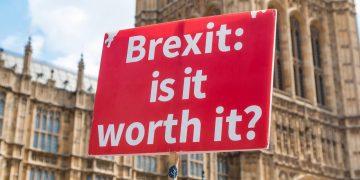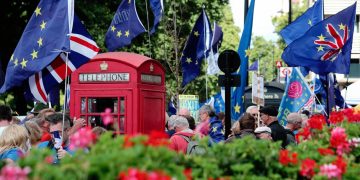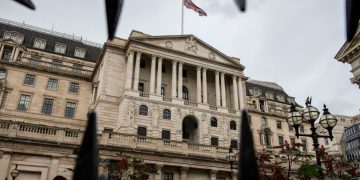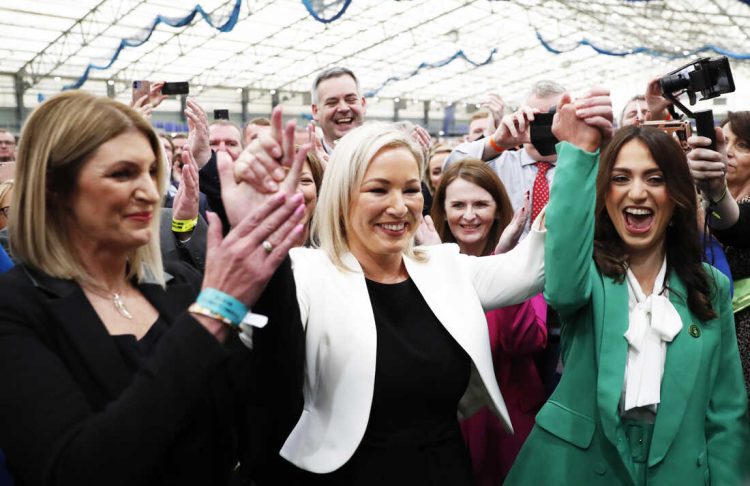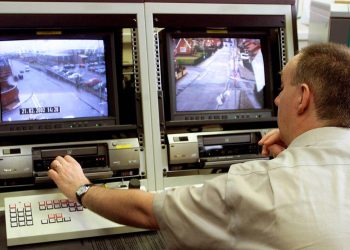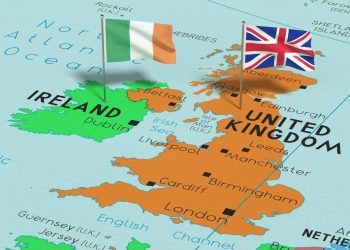The Northern Ireland election on Thursday could be the start of a massive change in the country’s policy.
The local election will be held on May 5, and it is most likely that we will witness the victory of Sinn Féin on the May 5 election. This could raise the nationalist hopes for the unification of Ireland and the British government’s worry in negotiation with the European Union.
IRA legacy comes to life
Sinn Féin, formerly referred to as the political arm of the armed group of the Irish Republican Army (IRA), is now 26% popular in surveys.
Meanwhile, Fianna Fáil’s centre-right party is 22 per cent popular. It is expected that the ruling party, Fine Gael, will win only 20 percent of the votes. In the 2017 local elections, the Democratic Unionist Party closely prevented Sinn Féin from winning.
This was the first time that an Irish nationalist party rose to power, replacing the Northern Ireland Unionists that often supported unification with London, and became the first minister in Belfast for the first time.
Ergo, Michelle O’Neill, the 45-year-old Vice President of Sinn Féin, who is now the Deputy Prime Minister in the coalition government, could be elected as the Prime Minister of Northern Ireland in a historical event. Of course, one must wait and see whether the Democratic Unionists will undertake the post of Deputy Prime Minister.
In accord with the 1998 agreement, which ended three decades of bloody conflict in Northern Ireland, the state’s power must be divided between the two, and one lacks executive power without the other.
The victory of Sinn Féin in the May 5 election marks a turning point for a party that has been associated with the Irish Republican Army for a long time; a militant group using bombs and bullets to oust Northern Ireland.
But the winning party will face a considerable amount of misfortunes. The economic crisis caused by the war in Ukraine, long waiting lists for the Covid-19 pandemic, Brexit, the Partygate Scandal and the life cost crisis, and skyrocketing fuel and food costs make it unlikely that an effective government will emerge in the short term.
DUP is ready for controversy
The DUP also states that it does not refuse to join the new government only if significant changes occur in the border arrangements after Brexit, known as the Northern Ireland Protocol, which most unions are objection to.
Post-Brexit laws have led to customs and border controls being imposed on some goods entering Northern Ireland from other parts of the UK. Due to the misfortunes that have arisen through this, the British government is pressuring the European Union to accord to significant changes, including the abolition of most customs checks. It is also threatening to suspend the law unilaterally if the EU refuses.
Currently, negotiations between the two parties have come to a dead-end, and now with the victory of Sinn Féin in the May 5 election, the Johnson Bloc will be in a more difficult position.
The partition of Ireland is coming to an end.
On May 3, 1921, Ireland was divided into North and South by a law enacted by the British Parliament. That was a law intended to guarantee British sovereignty over both parts, but history determined the fate of Ireland and this law otherwise.
Twenty-six Catholic cities formed in the southern part of what is now the Republic of Ireland, and six cities, most of which are Protestant, remained in northern Britain.
The Irish Government law, which came into force on May 3, 1921, formed two parliaments, one for the north and one for the south. In but meantime, an Irish council of 20 members from the North and South Parliaments was set up to preserve the unity of Ireland.
The northerners of Ulster, who wanted to remain under direct British rule, accepted the law with reluctance. Still, the rest of the Irish opposed it, as Sinn Féin had become the largest nationalist party and had called for independence since late 1918. Therefore, they formed their parliament and government and declared their independence on January 21, 1919.
Consequently, the war between the Republican Army of Ireland, the military branch of Sinn Féin, and Britain commenced in early 1919. Until 1921, the War of Independence of Southern Ireland continued between the Irish Republican Army and Britain until Southern Ireland gained complete independence in 1922.
But the fire of this conflict in Northern Ireland was burning for years until the bloodshed was halted by armed militias with the Good Friday Pact or the Belfast Pact in 1998, and power was divided between Protestants and Catholics in Northern Ireland.
The agreement also allowed for a forthcoming referendum on the reunification of Northern and Southern Ireland. It, however, stressed that as long as the majority in the north wanted to remain under British rule, their demand would be legal and enforceable.
Brexit ignited the flames of Northern Ireland disputes
The implementation of Brexit once again sparked street protests in Northern Ireland. That was because Laws enacted following Britain’s exit from the European Union Customs Union have created barriers to the free flow of goods and services in Northern Ireland.
Southern Ireland is still a member of the European Union, but the northern part has left the bloc due to coming under British rule. Therefore, the entry of goods into this country and their exit are subject to customs formalities at the border of Southern Ireland. This created a short-term shortage of goods in the country and led to street protests.
In addition to Brexit, another factor that has changed in Northern Ireland in recent years is population composition. During the partition, the protesters had a two-thirds majority compared to Catholics, having a third of the population. However, now Protestants and Catholics in Northern Ireland have almost the same people. Thus, the tendency toward unification of Ireland has undoubtedly increased, and the historic partition of Ireland will continue to be a challenge.
All of this has led to conflict and tension in Northern Ireland after a hundred years of separation from Southern Ireland, and the memories of the historical conflict between the Catholics and the Protestants to be revived.
Conclusion; consequences of the Sinn Féin’s victory
Sinn Féin has come a long way to win. Anyhow, despite the success of Sinn Féin in the May 5 election, a new battle lies ahead. The party has gained the support of the Irish youth, but the obstacles remain numerous.
The 2016 Brexit referendum was won while most Northern Irish citizens voted for keeping Britain in the EU.
Interestingly, the most significant deadlock and current challenge of Brexit, the Northern Ireland Protocol, concerning the Northern-Southern Ireland (Republic of Ireland) border, Britain’s only land border with the European Union, has not received much attention in recent surveys.
According to polls, only 1% of people in Northern Ireland considered Brexit a critical issue. The main topics of this election were health insurance, pension and housing.
Sinn Féin’s victory is a political earthquake in Britain, but why is that? In recent years, Sinn Féin has presented its purpose to be uniting Northern Ireland with the Republic of Ireland at the same time as the British referendum on Brexit.
Now that the party is more likely to win in Northern Ireland than ever before, holding a Northern Ireland secession referendum seems more straightforward.
However, Scotland held a secessionist referendum in 2014, and it failed. Given the severe consequences of the COVID-19 pandemic and the Russian-Ukrainian war on Britain, such a referendum would not seem to be a priority, at least in the short and medium-term, and neither would London agree with it. Still, the victory of Sinn Féin in the May 5 election could lead to a change that is against the British interest in negotiating with the European Union.

